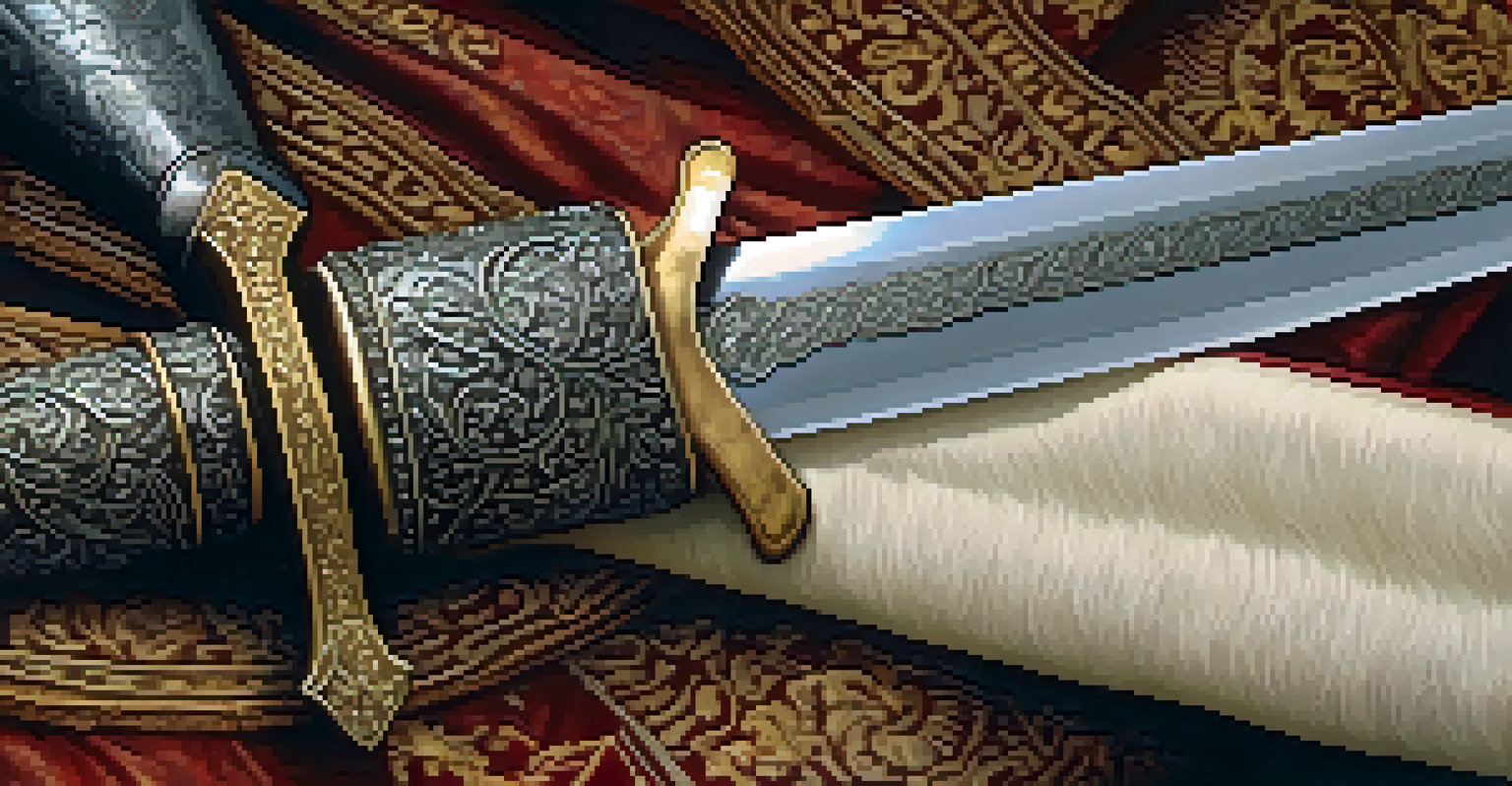Chivalry and Self Defense: The Knights of Medieval Europe

Understanding Chivalry: The Code of the Knights
Chivalry was more than just a set of rules; it was a way of life for knights in medieval Europe. This code emphasized values such as bravery, honor, and courtesy, particularly towards women and the weak. Imagine a knight as not just a warrior, but also a protector, embodying ideals that went beyond mere combat skills.
Chivalry is not dead; it is a part of our everyday lives, whether we recognize it or not.
The concept of chivalry emerged during the 12th century, influenced by the feudal system and the growing importance of knighthood. Knights were expected to serve their lords faithfully while also upholding justice and defending their realms. Thus, chivalry became intertwined with the social and political fabric of the time, shaping the identity of the knight.
However, the code was not merely aspirational; it had practical implications for knights and their conduct in battle. Knights were trained to fight, but they were also taught to show mercy and respect their foes. This balance between aggression and nobility defined the unique role of knights in medieval society.
The Role of Self-Defense in a Knight's Life
For knights, self-defense was a crucial skill, not just for survival in battle, but also for maintaining their honor. The ability to defend oneself effectively was a testament to their training and commitment to the chivalric code. Picture a knight as both a fierce warrior and a peacekeeper, ready to protect those who could not defend themselves.

Self-defense practices were rooted in various martial arts of the time, including swordplay and horsemanship. Knights underwent rigorous training to master these skills, ensuring they could respond to threats swiftly and decisively. This dedication to self-defense was not solely for personal gain; it reflected a knight's duty to safeguard their lord and community.
Chivalry: A Knight's Guiding Code
Chivalry was a comprehensive code that emphasized values like bravery, honor, and courtesy, shaping the identity and conduct of knights in medieval society.
Moreover, the concept of self-defense extended beyond the battlefield. Knights also had to navigate the complexities of court life, where honor and reputation were paramount. Being able to defend one's honor in social situations was just as critical as defending oneself in combat.
Training in Arms: The Knight's Education
Becoming a knight was a process that started at a young age, often around seven years old. Young boys, known as pages, were trained in various skills, including riding, swordplay, and etiquette. This early education laid the foundation for their future roles as knights, blending the art of warfare with the principles of chivalry.
The true measure of a knight is not the sword he wields, but the honor he carries.
As they progressed, these pages became squires, assisting knights and learning directly from them. This apprenticeship was crucial, as it provided practical experience and mentorship. It's similar to internships today, where hands-on experience complements theoretical knowledge, shaping well-rounded individuals.
Through rigorous training, knights learned to wield weapons like swords and lances, preparing them for the challenges of battle. Each aspect of their education, from physical training to moral lessons, was designed to cultivate not just a skilled warrior, but a chivalrous leader.
The Importance of Honor in Chivalric Culture
Honor was the cornerstone of a knight's identity, influencing every aspect of their life. A knight's reputation depended on their ability to uphold the ideals of chivalry, including bravery in battle and fairness in conduct. Failing to defend one's honor could lead to disgrace, making the pursuit of honor a relentless endeavor.
Knights often engaged in tournaments, which served as both a means of training and a spectacle of honor. These competitions showcased their skills while allowing them to earn accolades and recognition. Think of tournaments as the medieval equivalent of modern sports events, where honor and reputation are won through skill and competition.
Honor: Central to a Knight's Life
Honor was the cornerstone of a knight's identity, influencing their actions in battle and court, and driving them to uphold the ideals of chivalry.
Ultimately, the pursuit of honor shaped the relationships between knights, their lords, and the communities they served. A knight's actions—whether in battle or court—were scrutinized, as their honor was not just personal but also reflective of their lineage and feudal ties.
Chivalry and Warfare: A Complex Relationship
While chivalry emphasized noble conduct, the reality of warfare often contradicted these ideals. Knights were expected to display valor, yet the chaos of battle frequently led to brutal and ruthless behavior. This duality created a tension between the chivalric code and the harsh realities of medieval combat.
In many cases, knights found themselves torn between loyalty to their lords and the principles of chivalry. The need to fight for one's lord might clash with the expectation to show mercy to defeated foes. This conflict illustrates the complexity of the knight's role, as they navigated the intricacies of loyalty, honor, and morality.
Despite these contradictions, the ideal of chivalry persisted, influencing how knights approached warfare. Many sought to embody the nobility of their code, striving to find ways to honor their opponents while still fulfilling their duties as warriors.
Chivalric Legends: Heroes and Myths
The stories of legendary knights, such as King Arthur and Sir Lancelot, have immortalized the ideals of chivalry. These tales often depict knights undertaking noble quests, battling for honor, and defending the helpless. Through folklore, the concept of chivalry was romanticized, creating enduring heroes who embodied its values.
These legends served not only as entertainment but also as moral lessons, illustrating the virtues of courage, loyalty, and honor. They inspired generations of knights to aspire to greatness, reinforcing the importance of the chivalric code. Think of these stories as the fairy tales of medieval times, shaping cultural values and expectations.
Chivalry's Legacy Today
The principles of chivalry continue to resonate in modern society, encouraging acts of respect and kindness as a reflection of noble values.
While these tales may be embellished, they reflect the societal ideals of the time, encouraging knights to aspire to higher principles. The legends of chivalric heroes continue to resonate today, reminding us of the enduring impact of honor and bravery.
The Legacy of Chivalry in Modern Society
Though the age of knights has long passed, the ideals of chivalry still resonate in modern society. Concepts of honor, respect, and protection continue to shape our understanding of what it means to be noble. This legacy can be seen in various forms, from gentlemanly behavior to the way we value bravery in our communities.
In contemporary contexts, chivalry often manifests in acts of kindness and respect towards others. Whether it's holding the door for someone or standing up against injustice, these small gestures echo the principles of chivalry. It's a reminder that the spirit of knighthood lives on, even if the armor and swords have faded into history.

Ultimately, the legacy of chivalry challenges us to reflect on our own values and actions. As we navigate our daily lives, we can strive to uphold the ideals of honor, respect, and protection that defined the knights of medieval Europe.